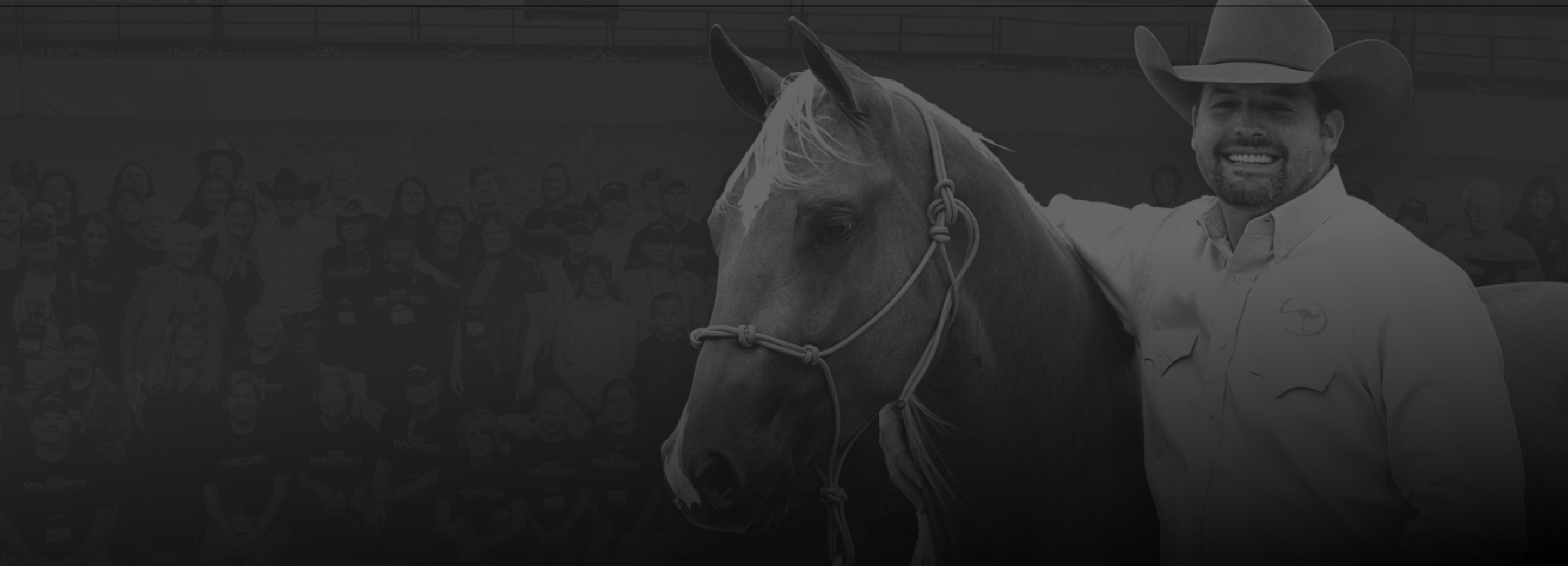For the past 20 years, Clinton Anderson from Downunder Horsemanship has devoted his life to creating the best training tools and videos to help bring his method to you. Join him on his weekly endeavors to tackle some of the most challenging situations with problem horses and problem owners. This week, we watch as Clinton reminds us about the difference between the reactive vs. thinking state of mind.
Clinton starts this episode by reminding viewers that horses have two sides of their brains: a reactive side and a thinking side. The reactive side of a horse’s brain is their innate senses. It’s what Mother Nature tells them to do—react and run, react and run, react and run. Remember, animals who might be hunted as prey have one form of defense, and that’s to run away and escape. Luckily, horses are faster than anything that will eat them, so they can easily outrun danger. Horses don’t have big teeth or claws like a lion or tiger, but they do have speed. So, Mother Nature said to horses, “If something bothers you, upsets you, or you’re worried about something… just run.” It’s their instinctual fight-or-flight response.
But what if they can’t run? What if, for example, a horse runs into a dead-end cave and a lion comes right up to the front of the cave? The horse can’t run anymore, so their only other option is to fight. This is similar to how a horse would behave if they’re tied up to a fence and a tractor comes past and spooks them. The horse can’t run because they’re tied up, so maybe they’ll start to pull back against the rope and try to fight. Horses will only fight if they can’t run away. Fight or flight is their natural state of thinking and the reactive side of their brain.
So, horsemen need to teach their horses how to use the thinking side of their brains. This isn’t necessarily natural for horses. It’s something we, as humans, instill in them. It’s like giving them a blueprint for a new way of thinking. It goes against what they learn as foals, and we have to teach them not to run away from the things that scare them. It’s neither natural nor instinctive, but they can learn it with time.
Not only can horses learn how to use this thinking side, but they can get very good at it over time. They’ll be able to overcome their natural fears with learned behavior and desensitization. Instilling the Downunder Horsemanship Method can also make a big difference. Moving your horse’s feet forwards, backward, left, and right will gain your horse’s respect and desensitize them to objects that move or make noises. Keep this up and you’ll develop the horse’s thinking side of his brain. The goal is to get that side huge so you can be a leader for your horse and create a safe partnership where your horse looks to you for guidance. Plus, the bigger the thinking side of the brain gets, the smaller the reactive side becomes. It’s like two bubbles that are interconnected. As one shrinks, one grows. They can’t grow or shrink at the same time, but they can fluctuate based on learned behaviors and moving your horse’s feet.
You help grow that thinking side of their brain on the ground through a series of groundwork exercises and through a series of riding exercises. That, in combination with desensitizing your horse, is the key to success. Horses tend to hate objects that move and make noise, but the more you desensitize them to it, the less they’ll care. This is especially important with plastic bags, flags, or anything that your horse might encounter when they’re out and about. Chainsaws, tractors, you name it. Desensitizing is key, but when paired with groundwork, you’ll help grow your horse’s thinking side so that when he does use the reactive side, it’ll take very little effort on your part to get him to use the thinking side and relax.
So, never forget that horses have a reactive side of their brain and a thinking side. And they’re never using both sides of their brain at the same time. They’re either reacting or thinking; they’re not doing both.
To learn more about the Downunder Horsemanship training method, become a member of the No Worries Club, or get information on any of the products featured on our show, visit our homepage and download the Downunder Horsemanship app today!

Master Your horsemanship Skills
Like these tips? Join the No Worries Club and hone your skills with thousands of hours of Clinton’s easy, step-by-step method horse training videos.



